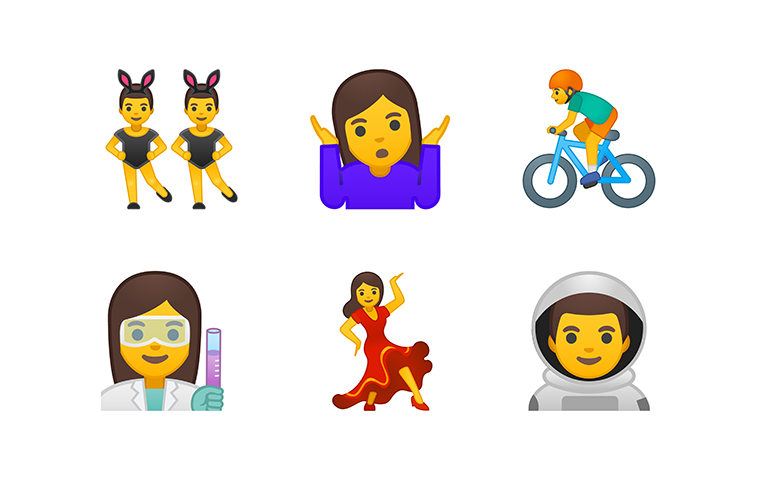
Fonts and Emoji
Emoji are a universal language, but they haven't always represented the world. Agustin Fonts ’08 did his part to fix that.
Last year, Agustin Fonts ’08 looked at the emojis offered on his phone and saw something that bothered him. Specifically with its representation of women: dancers, princesses, a bride, lipstick, and nails being painted. It wasn’t just a problem, it was archaic.
And, that’s not something either Fonts or his employer, Google, ever wants to be. So much so that they have a giant dinosaur—the 15-foot tall skeleton type you’d see at a museum—sitting in the courtyard outside of Building 43, Android’s headquarters in Mountain View. It’s a reminder of what happens when you stop moving forward. You go extinct.
Fonts is a product manager at Google. His role is to manage the operating system elements that provide app developers what they need to build user interfaces in Android, including text and emoji.
So when Fonts and the Android design team (two women and two men) tackled emoji redesign in the spring of 2016, issues with gender representation in the emoji universe became a clear problem. For example, the police officer was a man, the dancer was female.
“We thought, this doesn’t match the world or Google. This is not inclusive,” Fonts says.
Ten years ago, when emoji were ornamental, this might not have been a crisis. Today, emoji no longer just represent words, they’ve, in some instances, replaced them. Representation matters. If you don’t see yourself represented, you feel left out.
Fonts and the team at Google wanted to fix that by creating a whole new set of female emoji that portrayed the diverse careers women represent. From farming, manufacturing, healthcare, technology, business, and food services, to aspirational and less common jobs like a rockstar or artist. The team was inspired by campaigns to promote women in STEM and popular media campaigns such as #likeagirl and #girlswhocode.

It wasn’t enough to do this for Google, Fonts wanted the new set of female emoji to be available on all phones and platforms and to make a real impact globally. In order to do this, they wrote a proposal to present at the next gathering of the Unicode Consortium (Unicode), a group of representatives from various tech companies who define how digital text should work across platforms. They make sure that when you send a smiley from an Android, someone on an iPhone can understand it.
Unicode likes to limit the number of characters it adds each year. It’s like adding a letter to the alphabet and plenty of suggestions are rejected. There was once a Jesus emoji proposal that didn’t pass because of the existing religious symbols—it was deemed unnecessary.
But Fonts and the Google team made it easy for the consortium to agree on adding all 11 newly proposed emoji.
They opted to use a little-known mechanism to create new emoji by joining two or more characters. The female pilot would be created by merging the existing woman emoji and a plane. The other emoji worked in the same way. The consortium voted on, and approved, the proposal quickly.
Fonts and his team used technical skills to make social change. And the design element in the new emoji haven’t gone unnoticed either. The professional women emoji design were nominated by the Design Museum in London for the Designs of the Year award. The winner will be announced on January 25, 2018.
Helping to create the new set of female emoji is one of the things Fonts says he’s most proud of. He once saw a young girl walking on the Google campus with a t-shirt featuring all 11 new female emoji on it.
“I very awkwardly approached the mom and asked where she got the t-shirt from and found out it was from the Gap,” Fonts says. “I was like, wow, this is so awesome. It’s empowering girls, even little ones now.”